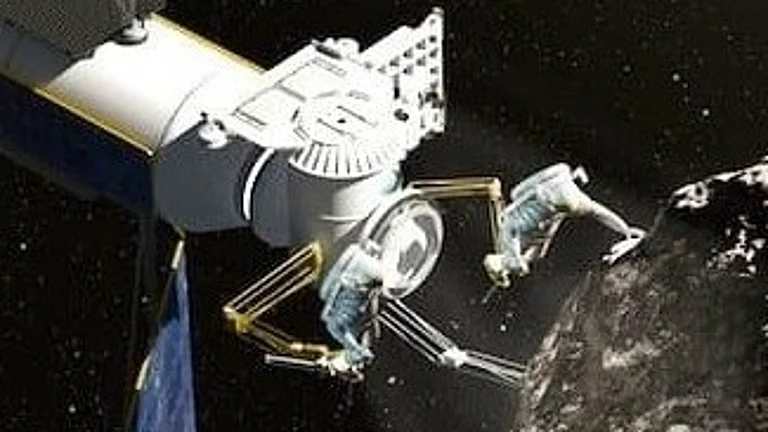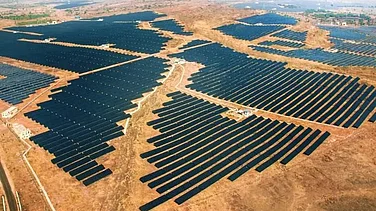The Centre issued a set of draft guidelines on December 27 for the establishment of public electric vehicle charging infrastructure under the PM Electric Drive Revolution in Innovative Vehicle Enhancement (PM E-DRIVE) Scheme. With EV users in mind, the scheme aims to support the setting up of charging infrastructure with the help of key stakeholders like charge point operators, state governments, government agencies, Central-level ministries, power distribution companies (DISCOMs) and Central Public Sector Enterprises (CPSEs).
Through this scheme, the Ministry of Heavy Industries (MHI) intends to extend up to 80 per cent subsidy on upstream infrastructure (behind the meter infrastructure) that is required for setting up fast charging stations. However, in certain cases the Ministry may provide 100 per cent subsidy, covering upstream power infrastructure as well. Upstream infrastructure refers to the process of installation and construction of charging stations at a nascent stage.
How many charging points have been proposed?
Under the E-drive scheme 72,300 charging points are planned to promote electric vehicle adoption across all major EV segments: This infrastructure will include 22,100 fast chargers for cars, 48,400 for two- and three-wheelers and 1,800 for e-buses and e-trucks.
Which cities and highways will be prioritised for the deployment of EV charging stations?
The PM E-drive scheme will prioritise installation of charging stations in cities with the highest EV adoption and highways with heavy traffic connecting major cities or industrial hubs. The cities and highways will be selected in consultation with stakeholders, based on criteria such as state capital status, population, vehicular volume and freight. For national highways, proposals have been invited from the Ministry of Road, Transport and Highways, while for state highways, state government nodal agencies, in collaboration with the state highway authorities, are expected to submit proposals.
What are the charging standards required for EVs under PM E-Drive scheme?
The charging infrastructure under the E-drive scheme must comply with the Ministry of Power’s 2024 guidelines on Installation and Operation of Electric Vehicle Charging Infrastructure. Minimum charger capacities are set at 12 kilowatt (kW) for two-wheelers and three-wheelers, 60 kW for four-wheelers and 240 kW for e-buses and e-trucks.
To promote adoption of EVs, public charging stations, the draft guidelines recommend a minimum of one fast charger for four wheelers and two for two- and three-wheelers. For highways, it is at least one fast charger for e-buses or e-trucks and at least two fast chargers for four-wheelers. In an earlier release issued by the Ministry of Power, the government indicated installing a charging station every 100 km along the highway for e-buses and e-trucks.
How can states and Centre contribute to further developing charging infra?
The draft guidelines recommend various incentives, including capital subsidies for EV charging equipment under state EV policies and other measures to accelerate the development of the infrastructure, bolster the viability of the charging business and reduce charging tariffs.
The draft urges state governments and Central ministries to coordinate with stakeholders and provide land at suitable locations, addressing a major roadblock. It also recommends streamlined support for deployment, including expedited electricity connections and regulatory approvals.
Additionally, the draft moots a transparent and competitive bidding process involving Charge Point Operators (CPOs), as their technical expertise helps enhance the usability of the charging stations.
Most importantly, it underscores the importance of integrating renewable energy sources with charging infrastructure and developing a smart grid.
How will these guidelines be implemented?
Implementing the scheme and establishing the required infrastructure relies crucially upon recommendation proposals from states and Central ministries. The guidelines, therefore, advise states to appoint a nodal agency to work with Urban Local Bodies, municipal corporations, state highway authorities, state PSUs, DISCOMs and other public departments. Within the agency, a committee headed by the state Chief Secretary, will recommend proposals for EV charging stations.
A host of Central ministries, including those of petroleum and natural gas, road transport and highways, telecommunications, tourism, health and family welfare, railways, civil aviation and ports, shipping and waterways are expected to submit proposals to the MHI. These ministries are to coordinate with organisations in their control to identify suitable locations and aggregate the demand for EV charging stations. Post-aggregation, the ministries would submit consolidated proposals.
The nodal department will be responsible for identifying the appropriate locations to set up the stations. After the proposals are approved by the MHI, the tendering process will be initiated and that will be followed by disbursement of subsidies.































